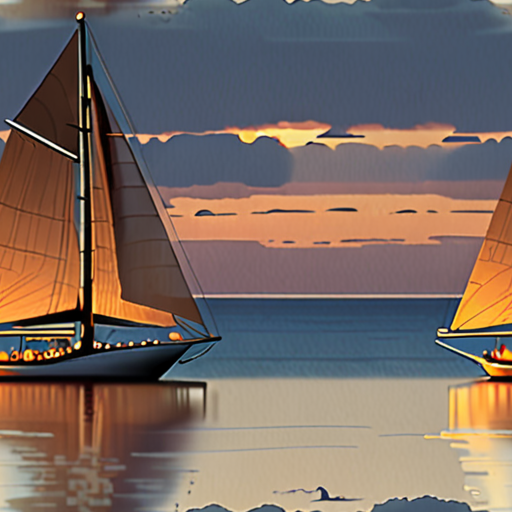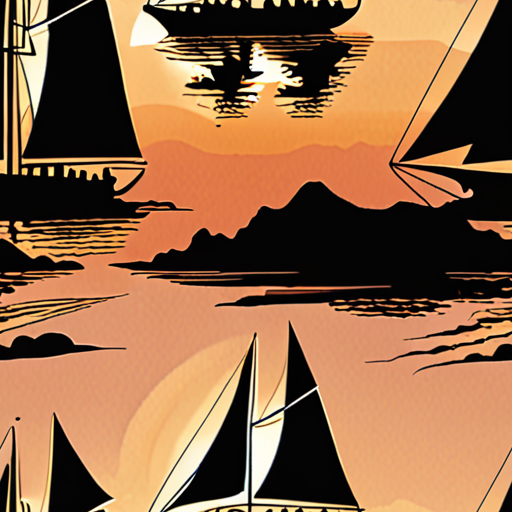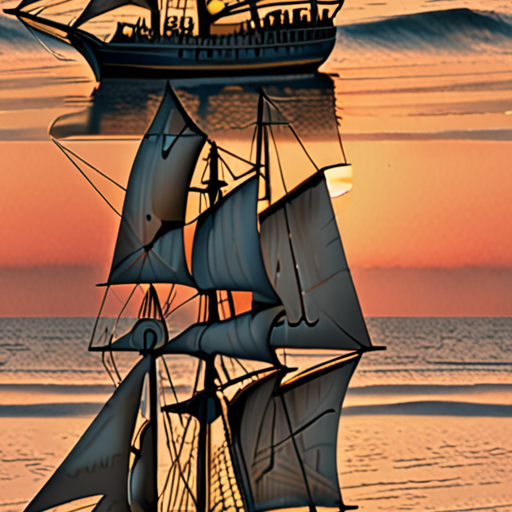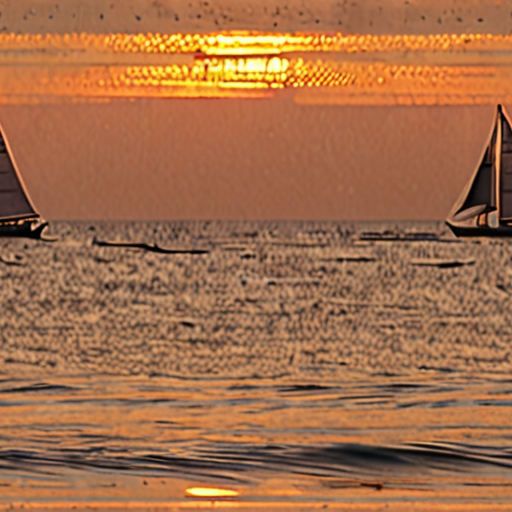For those who find solace in the rhythmic motion of waves and the majesty of towering masts, sailing photo art offers a unique blend of artistic expression and technical expertise. By combining the thrill of sailing with the creative process of photography, enthusiasts can capture the essence of the ocean in a way that transcends mere documentation. Whether it’s the play of light on rippling water, the majestic silhouette of a sailboat against a vibrant sunset, or the intricate details of a sailor’s hands grasping the helm, sailing photo art invites viewers to step into the world of the sailor and experience the raw emotion of being out on the open sea.

How to Take Pictures of Sailing
To capture stunning sailing photos, you need to understand the basics of photography and the unique challenges of shooting on the water.
-
Camera Settings
A fast shutter speed of at least 1/1000th of a second is crucial to freeze the motion of the sailboat and prevent blur.
Additionally, a high ISO setting can help to capture images in low-light conditions, but be careful not to introduce noise into your photos.
-
Lenses
The type of lens you use will depend on the type of shot you’re trying to get.
Wide-angle lenses are great for capturing the vastness of the ocean and the sailboat’s movement, while standard lenses are better suited for portraits and close-up shots.
-
Composition
When composing your shot, consider the rule of thirds and place interesting features along those lines.
Also, pay attention to the background and try to eliminate any distractions that might take away from the sailboat.
-
Lighting
Lighting is critical when taking sailing photos, as it can make or break the mood and atmosphere of your image.
Look for soft, natural light during the golden hour or overcast skies to create a warm and inviting ambiance.
-
Post-processing
After capturing your photos, edit them to enhance the colors, contrast, and overall look of the image.
Pay attention to the exposure and adjust it accordingly to bring out the details in the sailboat and the surrounding environment.
By mastering these techniques and practicing regularly, you’ll be able to take stunning sailing photos that showcase the beauty and majesty of the sport.
Remember to always follow safety guidelines and regulations when shooting near the water, and never compromise your safety for the sake of getting the perfect shot.
With patience, persistence, and practice, you’ll become a skilled sailing photographer and be able to capture the essence of this thrilling sport.
What is Zig Zag Sailing Called?
Zig-zag sailing is commonly referred to as tacking.
- Tacking involves adjusting the sails to change direction, allowing sailors to navigate through the wind.
- This technique enables sailors to sail closer to the wind, making it possible to cover more ground and reach their destination efficiently.
Understanding Tacking
Tacking is a fundamental sailing term that refers to the process of turning the bow of a boat through the wind, causing the sails to shift from one side of the boat to the other.
- The sailor adjusts the sails to maximize the angle between the wind and the boat’s course.
- As the boat turns into the wind, the sails fill with air, propelling the vessel forward.
- The sailor continues to adjust the sails to maintain the optimal angle, allowing the boat to move efficiently through the water.
Sailing Techniques and Strategies
Mastering tacking techniques requires a combination of skill, knowledge, and practice.
- Sailors need to understand how to read the wind and water conditions to determine the best course of action.
- They must also learn how to trim the sails correctly to maximize speed and efficiency.
- By developing these skills, sailors can become proficient in tacking and navigate through challenging waters with confidence.
Benefits of Tacking
Tacking offers several benefits for sailors, including:
- Increased maneuverability: By adjusting the sails, sailors can quickly change direction and respond to changing wind conditions.
- Improved speed: Tacking allows sailors to sail closer to the wind, reducing drag and increasing speed.
- Enhanced safety: By mastering tacking techniques, sailors can better navigate through crowded waters and avoid collisions.
Conclusion
Tacking is a fundamental sailing technique that requires skill, knowledge, and practice to master.
By understanding the principles of tacking and developing the necessary skills, sailors can become proficient in navigating through challenging waters and achieving their goals.

What is a Sailing Boat Called?
A sailing boat can be referred to by various names depending on its size, type, and intended use. Here are some common terms used to describe different types of sailing boats:
- Sailboat
- Sailing Dinghy
- Sailing Yacht
- Yacht
- Keelboat
- Catamaran
- Monohull
- Trimaran
These terms are often used interchangeably, but they may have slightly different meanings based on the context in which they are used. For example, a sailboat might refer to a small, lightweight vessel, while a sailing yacht could refer to a larger, more luxurious boat.
Types of Sailing Boats
Sailing boats come in a wide range of sizes and styles, from small dinghies to large superyachts. Some popular types of sailing boats include:
- Optimist Dinghy
- Lasers
- J24
- J70
- Beneteau First
- Beneteau Oceanis
Each of these types of sailing boats has its own unique characteristics and features, and they are suited to different types of sailing and sailors.
Choosing the Right Sailing Boat
When choosing a sailing boat, there are several factors to consider, including the size of the boat, its type, and its intended use. Here are some things to think about:
- Size: Consider how many people will be sailing on the boat and what type of sailing you plan to do.
- Type: Think about the type of sailing you want to do and choose a boat that is suitable for that type of sailing.
- Intended Use: Consider how you plan to use the boat and choose a boat that meets those needs.
- Experience Level: Consider your level of sailing experience and choose a boat that is suitable for your skill level.
By considering these factors and doing some research, you can find the perfect sailing boat for your needs and enjoy many hours of fun and exciting sailing.
What Makes a Great Sailing Photograph?
I’ve always been fascinated by the power of a great sailing photograph to evoke the essence of the ocean and transport us to a world of freedom and adventure.
- Capturing the Perfect Moment
- Understanding Light and Composition
- Telling a Story
A great sailing photograph requires a combination of technical skill, creativity, and a dash of luck. It’s the ability to capture the perfect moment – the precise instant when the sun is setting, the waves are crashing, and the sailboat is gliding effortlessly across the water.
Light and composition are two essential elements of a great sailing photograph. Understanding how to work with light, whether it’s the soft golden glow of dawn or the dramatic shadows of dusk, can make all the difference in capturing a truly breathtaking image.
A great sailing photograph tells a story – a story of adventure, of freedom, of the human spirit. It’s a reminder that there’s still so much to explore, discover, and experience in our world.
How to Capture Stunning Images of the Sea
So, how can you capture stunning images of the sea? Here are a few tips:
- Invest in Quality Equipment
- Practice, Practice, Practice
- Pay Attention to Details
A good camera and lens are essential for capturing high-quality images. Consider investing in a waterproof camera or a DSLR with a good zoom lens.
The more you practice, the better you’ll become at capturing stunning images of the sea. Experiment with different techniques, such as panning and long exposure, to add drama and interest to your shots.
Great sailing photographs often have a sense of intimacy and connection to the subject matter. Pay attention to details, such as the texture of the sailcloth, the sparkle of the water, and the expression of the sailors.
Join the Community of Sailing Photographers
At Sailing Photo Awards, we’re passionate about celebrating the art of sailing photography and inspiring others to capture their own unique perspective on the sea. Join our community today and share your favorite sailing photographs with us!
What Makes a Beautiful Sailing Photo?
A beautiful sailing photo captures the essence of the ocean and its majestic vessels, evoking emotions and inspiring the viewer.
- Capturing Movement : A great sailing photo conveys the dynamic movement of the boat, whether it’s gliding smoothly across the water or navigating through choppy waves.
- Emphasizing Texture : Incorporating the texture of the sail, water, or surrounding environment adds depth and visual interest to the image.
- Highlighting Light : Utilizing natural light or creative lighting techniques can enhance the mood and atmosphere of the photograph, making it more captivating.
- Telling a Story : A beautiful sailing photo often tells a story, conveying the sense of adventure, freedom, or tranquility associated with sailing.
Techniques for Capturing Oceanic Elegance
To capture the essence of the ocean in your sailing photos, consider the following techniques:
- Panning : Use panning to freeze the motion of the boat while blurring the background, creating a sense of dynamism.
- Long Exposure : Employ long exposure to convey the movement of the waves and the smoothness of the sail.
- Shallow Depth of Field : Use a shallow depth of field to isolate the subject, emphasizing the sail or the boat’s hull.
- Composition : Experiment with composition techniques, such as leading lines, framing, or symmetry, to create visually appealing images.
Mastering the Art of Sailing Photography
With practice and patience, you can develop the skills necessary to capture stunning sailing photos that showcase the beauty of the ocean and its vessels.
Remember to stay flexible, adapt to changing conditions, and always keep your camera ready to capture those perfect moments.
By mastering these techniques and staying true to your artistic vision, you’ll be well on your way to becoming a skilled sailing photographer.
Sailing Photo Awardscelebrates the artistry of sailing photography by featuring captivating images and stories from talented photographers.
Essential Tips for Creating Visually Striking Sailing Photo Art
I’m passionate about capturing the essence of the ocean through stunning sailing photo art, and I’d love to share my expertise with you.
-
Mastering Composition
When it comes to creating visually striking sailing photo art, composition is key. Consider the rule of thirds, leading lines, and framing your subject to create a balanced and harmonious image.
For example, try placing your sailboat near the horizon line, allowing the sky and water to frame the vessel. This technique creates a sense of depth and adds visual interest to your photograph.
-
Playing with Light
Lighting can make or break a photograph, and sailing photo art is no exception. Look for soft, golden light during the golden hour, or experiment with dramatic shadows and silhouettes during overcast days.
Don’t be afraid to experiment with long exposures to capture the movement of the waves and the sailboat’s motion. This technique adds a sense of dynamism and energy to your image.
-
Capturing Movement
Sailing photo art often involves capturing the dynamic movement of the ocean and the sailboat. Try panning with the subject to freeze the motion and create a sense of blur around the edges.
You can also experiment with slower shutter speeds to convey the sense of speed and movement. Just be careful not to overdo it, as too much blur can detract from the overall image.
-
Telling a Story
The best sailing photo art tells a story, evoking emotions and transporting the viewer to a different world. Think about the narrative behind your image – what’s happening in the scene, and what’s the mood?
Consider adding context to your image, such as a caption or a brief description, to give the viewer a deeper understanding of the scene and its significance.
-
Post-processing Magic
Finally, don’t underestimate the power of post-processing! Adjusting the exposure, contrast, and color balance can make a huge difference in the final result.
Experiment with different editing software and techniques to find the look that works best for your image. Remember, the goal is to enhance the photograph, not to alter its essence.
Conclusion
Creating visually striking sailing photo art requires a combination of technical skills, creativity, and passion. By mastering composition, playing with light, capturing movement, telling a story, and applying post-processing magic, you’ll be well on your way to producing stunning images that evoke the beauty and wonder of the ocean.
0 Comments